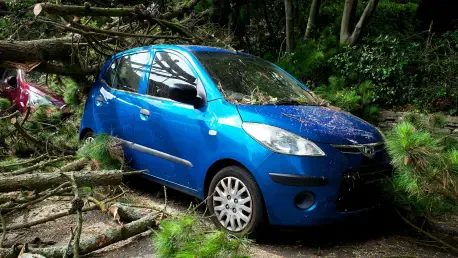Severe weather events, such as flash flooding and powerful storms, can wreak havoc on homes and vehicles, leaving property owners scrambling to assess damage and seek repairs. These natural disasters often strike with little warning, turning a normal day into a struggle to protect personal belongings and ensure safety. The aftermath can be overwhelming, with the daunting task of navigating insurance claims adding to the stress. Many individuals find themselves unsure of where to start or how to avoid common pitfalls during the process. Local experts and organizations have stepped in to provide valuable guidance on handling claims efficiently. This article offers a clear, step-by-step approach to filing claims for storm-related damage, ensuring that affected individuals can recover quickly and avoid unnecessary delays or complications.
1. Documenting the Damage and Initiating Contact
The first critical step in addressing storm damage is to thoroughly record all affected areas before taking any further action. Property owners should capture detailed photographs and videos of the damage to their homes or vehicles, as this evidence will be essential when submitting a claim. Once the documentation is complete, the next move is to reach out to the insurance provider promptly to report the incident. This step can often be time-consuming, so patience is key while waiting for a response. It’s also advisable to keep a record of all communications with the insurer, including dates and details of conversations. When seeking repairs, hiring local contractors is recommended, as they are more accessible for follow-ups or warranty issues. Additionally, any agreements with repair professionals should be in writing, specifying materials and costs. A general guideline is to avoid paying more than a third of the total cost upfront as a deposit to protect against potential fraud or substandard work.
2. Preparing for Future Emergencies and Verifying Service Providers
Beyond filing a claim, being ready for future storms can mitigate stress and damage during sudden evacuations or emergencies. Assembling a portable emergency kit, often referred to as a “Go Bag,” is a practical measure for quick departures. This bag should include essentials like a light source, a first aid kit, non-perishable food, a change of clothes, and basic hygiene items if space allows. Such preparation ensures that individuals can leave at a moment’s notice without scrambling for necessities. Additionally, when hiring contractors for repairs, it’s vital to verify their credibility. Checking reviews and ratings through trusted platforms can help identify reliable professionals. Reporting or researching potential scams through available online tools is also a wise precaution. This dual focus on emergency readiness and careful selection of service providers helps safeguard both property and personal well-being, ensuring a smoother recovery process after a storm.
Final Reflections on Storm Recovery
Looking back, the process of handling storm damage claims revealed the importance of meticulous documentation and prompt communication with insurers. The steps taken, from capturing evidence to selecting trustworthy local contractors, played a crucial role in navigating the aftermath of severe weather. Reflecting on past events, it became evident that preparation was just as vital as reaction—having an emergency kit ready proved to be a lifesaver for many. Moving forward, individuals should consider reviewing their insurance policies regularly to understand coverage limits and exclusions. Exploring additional resources for scam prevention and contractor verification can further protect against future setbacks. As storms remain an unpredictable force, staying proactive by maintaining updated records and emergency supplies will offer peace of mind and a stronger foundation for recovery when the next disaster strikes.









